Generative AI for Finance and FP&A
Authored by JS Irick, Associate Partner, TruQua, an IBM Company
Co-Director, TruLabs (TruQua’s Internal Innovation Group)
Why Integrate Generative AI/Digital Assistants into FP&A?
The integration of digital assistants into financial planning and analysis (FP&A) is enhancing efficiency, accuracy, and strategic decision-making within organizations. There is a wealth of opportunity with GenAI digital assistants – from summarization to interacting within the finance data fabric.
In this blog, I will use TruQua’s FP&A GenAI tools to create “A/Rtemis”, a digital assistant geared towards a high value area, accounts receivable.

Let’s start by looking how a digital assistant like A/Rtemis can help us report, analyze and predict. With that context, we can then look at the larger topics on embedding GenAI into your FP&A processes. In this example, I will use SAP Analytics Cloud as the finance reporting/analytic layer of choice, but these advantages are available on any finance platform. With the rapid evolution of large language models (LLMS) and composable architectures, I believe that loosely coupling your LLMs is essential to rapid time-to-value and long-term project success.
Part 1 – Interacting with GenAI Assistant
Creative Exploration
By leveraging large language models and code generation, GenAI digital assistants work well in both general exploration as well as data analysis. This encourages creativity and new ways of describing data.
Rather than be forced into describing the graph I think I want, I can look more broadly at my options. Here we see three very diverse approaches to visualizing our data (with many more cropped out of our image):
What’s a good graph to help understand our customer’s unpaid invoices?
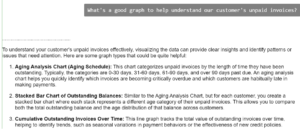
Figure 1: Data visualization options
We can then have our digital assistant create one of these graphs (or a visualization that these suggestions help inspire). In this case, let’s go with the heat map. Though it was a later option, the heat map allows us to see trends quickly, both globally and by condition:
Can you show the unpaid invoice age as a heat map?
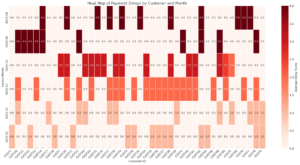
Figure 2: Heat map visualization example created by digital assistant
We can even solicit suggestions for future dataset enrichment to support our analysis:
What are some supplemental datasets that can help analyze invoice aging and likelihood of payment?
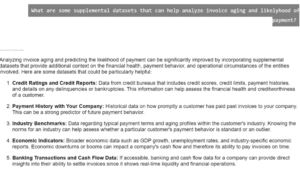
Figure 3: Dataset options
Whether independently or in collaboration with developers and data scientists, digital assistants for FP&A broaden our horizons for data interactions and analytics. Challenging the status quo for available reports and KPIs is essential for a modern FP&A team.
Simple Modeling
Let’s examine a simple modeling interaction with our digital assistant. We start off with a critical A/R question – which customers are most likely to pay? By querying the underlying data structure, our digital assistant can help us design a prediction model, including suggesting additional datasets that could be leveraged.
Which customers are most likely to pay?
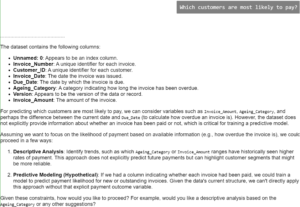
Figure 4: Example: Digital assistant modeling interaction
There are multiple directions I can take in the modeling task and can even define my own calculated features. This provides an interesting alternative to AutoML tools or stock regressions.
Let’s add in an assumption about our data:
Assume all invoices are unpaid.
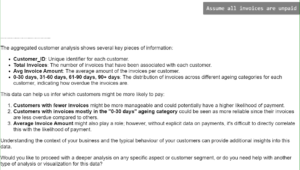
Figure 5: Data assumption examples
Let’s move forward without giving any more context. Note that there are standard segmentations of invoices, but also insights across analysis:
Proceed please.
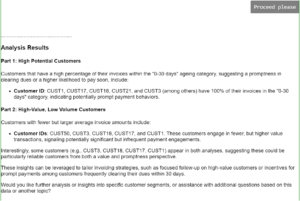
Figure 6: Example of analysis results with FP&A digital assistant
In these example interactions, we have seen not only how digital assistants for FP&A can perform reporting, analytic, and prediction tasks, we have also experienced how they can increase our creativity by suggesting numerous options from a data and visualization perspective.
Enabling Exploration
The FP&A digital assistants demonstrated that they are not constrained by the analytics, reporting, graphing, or predictive libraries of your FP&A platform. This gives a broader collection of functionalities for exploratory analysis and encourages creative thinking and deeper understanding of financial performance. Using retrieval augmented generation (RAGs; often called skills or functions) we can also utilize the power of your point specific planning solutions such as supply chain or headcount planning within our digital assistants.
Part 2 – FP&A Considerations for GenAI
The GenAI Analytic Lifecycle
I believe that generative AI digital assistants can play a critical role in traditional FP&A development. Put another way, it’s critical to understand “Why wouldn’t you use GenAI as your only way to interact with financial data”?
For finance, generative AI is best to support rapid iteration of ideas, divergent ideation, and data exploration. Let’s look at some of the advantages of taking the analytic and predictive models assisted by generative AI and pulling them back into the core FP&A system.
Compute Cost
The most advanced large language models have significant financial and environmental costs. Intelligently selecting the right sized model for an interaction can significantly lower compute costs and environmental impact, as can traditional development techniques such as caching.
Providing the logs and outputs of a digital assistant interaction provides huge acceleration for developers on your FP&A platform, quickly bringing to bear new analytics to the entire organization.
Exceptions
Finance analytics are defined by exceptions, and LLMs (as well as delivered predictive tools from vendors) can’t be expected to understand those exceptions. Even the simple example here suggests several exceptions for how invoices are processed:
- Services versus products
- Intracompany trade
- Recurring versus discrete purchases
- Payment terms
Handling exception-based logic is a core tenant of finance analytics and experienced developers/business users remains the most expedient way to ensure those exceptions are handled accurately in reporting and analysis.
Speed
In many ways, LLMs are shockingly fast, but these examples are still generating code for execution and follow up text generation. Cutting out those steps and building queries optimized for your finance systems is significantly faster for non-exploratory activities. We are also cutting out the data transfer and interim reads necessary to inform the LLM (or generated code) about the underlying data.
Taking Advantage of Native Platform Functionality
FP&A platforms are highly dynamic when it comes to data interaction (filtering, slicing, and dicing, drill down, integration with actuals, variance analysis, etc.). By using digital assistant collaboration as a core part of their development pipeline, organizations can get the best of both worlds, combining rapid exploration with stability, speed, and security.
Conclusion
When used as part of a cohesive strategy, generative AI is transforming human-system interaction in a positive way. Utilizing FP&A digital assistants for creative exploration, rapid iteration and ad-hoc analysis is a powerful tool for leaders to enable their business. That power is enhanced when utilized in concert with the strengths of traditional FP&A platforms.
This is a rapidly emerging area; just as planning reflects an organization’s strategy, so does their usage of generative AI. If you’re interested in demos, or would like to have a whiteboarding session on how to best utilize FP&A digital assistants, don’t hesitate reach out via my LinkedIn profile or ask questions in the comments below to continue the discussion.
About the Author

JS Irick’s consulting and research focusses on diverse, distributed cognition. As co-director of TruLabs, JS is living his dream of working with an exceptional team to drive global impact. JS is an internationally recognized speaker on the topics of generative AI, machine learning, enterprise planning and SAP S/4HANA.
